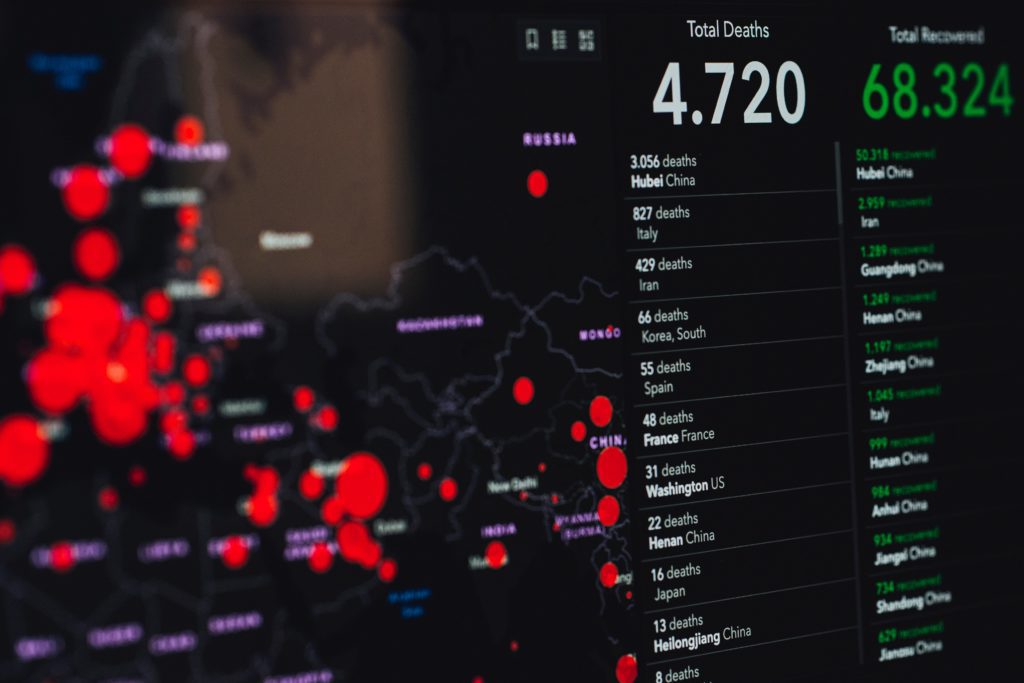IoT is all about information. It provides an excellent way for information that was typically difficult to get (or even impossible) to be retrieved, processed and used to make more informed decisions. IoT allows for better traffic flow in our cities, improved quality and safety in our food systems and weather forecasters to make more accurate forecasts.
Now, IoT is used to help us fight COVID-19. Here are a few ways:
Thermometers
Digital thermometers offer a benefit to the user and possibly to health care professionals on a larger scale. By eliminating the difficulty of having to read the "red line" (which, I have to admit is harder with my ageing eyes), we can be sure that patients, parents and caregivers can read temperatures more accurately. Many of these devices come with applications that allow for historical records that can easily be shared with a doctor or nurse, often via email.
These applications can do more on a much larger scale. Similar to how Google can identify a possible cluster of colds/flu based on the searches in an area, thermometer companies would be able to locate a potential group of COVID-19 based on a spike in temperature in a particular area. It also could provide information to remote health care workers as to which isolated patients may need to care the most.

GPS Helps Keep People Quarantined
This next part has a feel of "big brother," and I cannot imagine that this being tolerated in the Western world during a regular period. However, this is not your average time.
GPS location data were used by many Asian countries to ensure that those exposed to the virus did not break their mandated quarantine. They were required to send a text message (with embedded GPS information), along with a picture of their surroundings on a scheduled (and random) basis. This strict policy is one of the reasons why countries like South Korea were able to stop the spread quickly.

Setting up communications quickly
Many of the locations that the government is using for virus testing (and for quarantines) may not have active Internet access. It makes sense, as some of the sites are abandoned factories, make-shift tents on soccer fields and even closed hotels/dorms. For these locations to function normally, a reliable (and secure) method of Internet access is a must.
Cellular gateways are the ideal method of accessing the Internet in these situations. They can be set up in minutes and provide a fast method of getting access to vital information. In some cases, sensors can be connected to these gateways to provide great real-time information. These sensors can measure the opening of a door (to know if someone is attempting to break quarantine), identifying the storage temperature where essential supplies are kept to turning off lights that are not needed (to reduce power use at a remote site. Sensors are helping provide real-time information for those who need it the most.

Factories and transportation made better
Many essential items need to be manufactured and transported as quickly as possible, ranging from masks to ventilators to eventually, large volumes of vaccines. IoT helps factories operate more efficiently and keep costs down. However, I wanted to talk about the transportation of critical items, specifically how IoT is keeping them secure and safe. The GPS based systems can alert to issues; if a truck were to go off a set path or if needed, allow the driver to alert if they are feeling threatened or unsafe. Getting the truck safely to its destination is only one part of the issue; the products need to get there in proper condition. IoT sensors can be used to ensure that the vehicle was driven in a safe manner (and without breaking key vials) and that the correct temperature/humidity range was adhered to at all times, ensuring the safety of a vaccine or medicine.
IoT is here to help. It is here to help our critical front line workers do more with less and have a better understanding of what is going on at all times. This will help us defeat the world enemy we have faced in our lives. I would love to hear from any health care agencies who are looking for assistance in how to get the most out of IoT!
